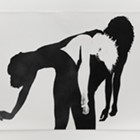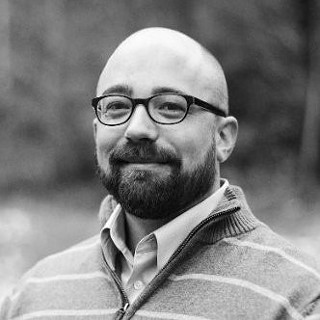One day she’s Lyn Daniels, local radio icon, avid skier, up-for-anything woman of 41 years. Then it hit, a debilitating headache unlike any other. Tough and headstrong, she endured the blinding pain for eight days before visiting a doctor. He told her that bad posture brought on the headache and gave her muscle relaxers.
Three days later, still in agony, Daniels was walking from her bed toward the bathroom when she collapsed. She fell against the wall so hard that pictures on the level below crashed to the floor. Her husband Jim ran to her side and called 911. It hadn’t been bad posture but an aneurysm, a bulging blood vessel in her brain that burst.
An ambulance rushed her to the hospital, but the odds were grim. About 50 percent die within minutes of a massive hemorrhage. Of those who survive, half will die within days or weeks. Those few lucky enough to live often do so with severe disabilities.
“The big problem is a lot of people don’t survive long enough to get to a hospital,” says Dr. Madeleine Geraghty, medical director of the stroke program at Sacred Heart Medical Center. (A stroke is when your pipes get clogged; a ruptured aneurysm is whenthey burst.) “The brain really doesn’t like blood on the outside. … It causes seizures and strokes."
Surgeons operated on Daniels’ brain for more than 10 hours and when she pulled through that, they told her family she would never walk or talk again.
Daniels is used to proving people wrong. She’d cheated death before.
As a baby, Daniels pulled a pot of scalding coffee onto herself, severely burning her little body. That time it was a cop who raced her to the hospital. Doctors told her family she had only a 30 percent chance of survival. She lived, but with scars across a portion of her body.
“I’ve beat the odds twice,” she says, adding in a serious tone. “I don’t want to roll the die again.”
Growing up in Spokane Valley, she graduated from University High and enrolled in a radio course at Spokane Falls Community College in 1983. She started her career two years later in Walla Walla and returned in 1989 to Spokane. She bounced around a few stations, married in 1992 and landed at KIX 96 playing country songs. (She likes country; unlike with rock music, you can understand the lyrics, as well, she says, as the people who call in during your show.)
It was July 2006 when the headache started. After collapsing, after the marathon surgery, after days of dark nothingness, she woke to find her husband holding her hand, she recalled recently, bursting into tears. “He’s my rock.”
Daniels spent weeks in intensive care at Sacred Heart Medical Center, then 34 days at St. Luke’s Rehabilitation Institute. She wanted to go home, but her husband feared he couldn’t provide the level of care she needed.
On Aug. 31, she finally did go home, riding in a wheelchair, and that could have been the end of the story. But not with Daniels. She immediately pushed herself — too hard sometimes. She had lost most of her motor skills on the left side of her body, making it difficult to walk. Early on, when attempting to step, she turned her foot and broke it. Later, when actually walking, she fell and snapped a bone in her shoulder.
Talking about it now, a year and a half later, she turns dark, her eyes well up. So much pain. So much fear and worry. Bitterness seeps in for a moment — she asks for the millionth time, why me? — but she quickly pushes the thoughts away. She knows she’s lucky. She’s alive. She has a loving husband. But she’s not the same person she was before. Physically, she can’t do some things. She used to love cleaning, but can’t really fold clothes anymore. She sees her plants dying up on a ledge, but can’t water them. She can’t run — at least not yet.
The wounds go deeper. Her disposition has changed. Her emotions live right beneath the surface; tears come easy. Many good friends don’t come around anymore.
But some things haven’t changed. She’s still tough as nails. Daniels returned to work full-time in October 2006, about three months after her aneurysm ruptured. She went on the air, where regular listeners called in to welcome her back.
“Oh, my God, it just made me cry,” she says, recalling how she muffled her sobs. “People feel such a connection to you. "
The prognosis going forward is uncertain. Daniels says doctors don't tell her much because they don't want her to get her hopes up. Because of spasms on her left side, she receives quarterly Botox shots to allow her to retrain her brain to control those muscles. Sliding her left leg, she is now beginning to walk without aid of a cane. She still doesn't have much control over her left arm and hand, but that didn't stop her from skiing earlier this year. Tethered to a friend, she slowly plowed down a mountain, a feat she plans to try again.
One place where she’s still herself is on the radio. No one can see her limp there or the cane that is resting nearby. Or the tears that sometimes run down her checks. Or the left arm that refuses to cooperate. Or the burn scars from childhood. Just listen to her voice. It’s pure Lyn.
“KIX 96,” she says enthusiastically with a sweet radio manner perfected over two decades. “This is Lyn Daniels.”
















